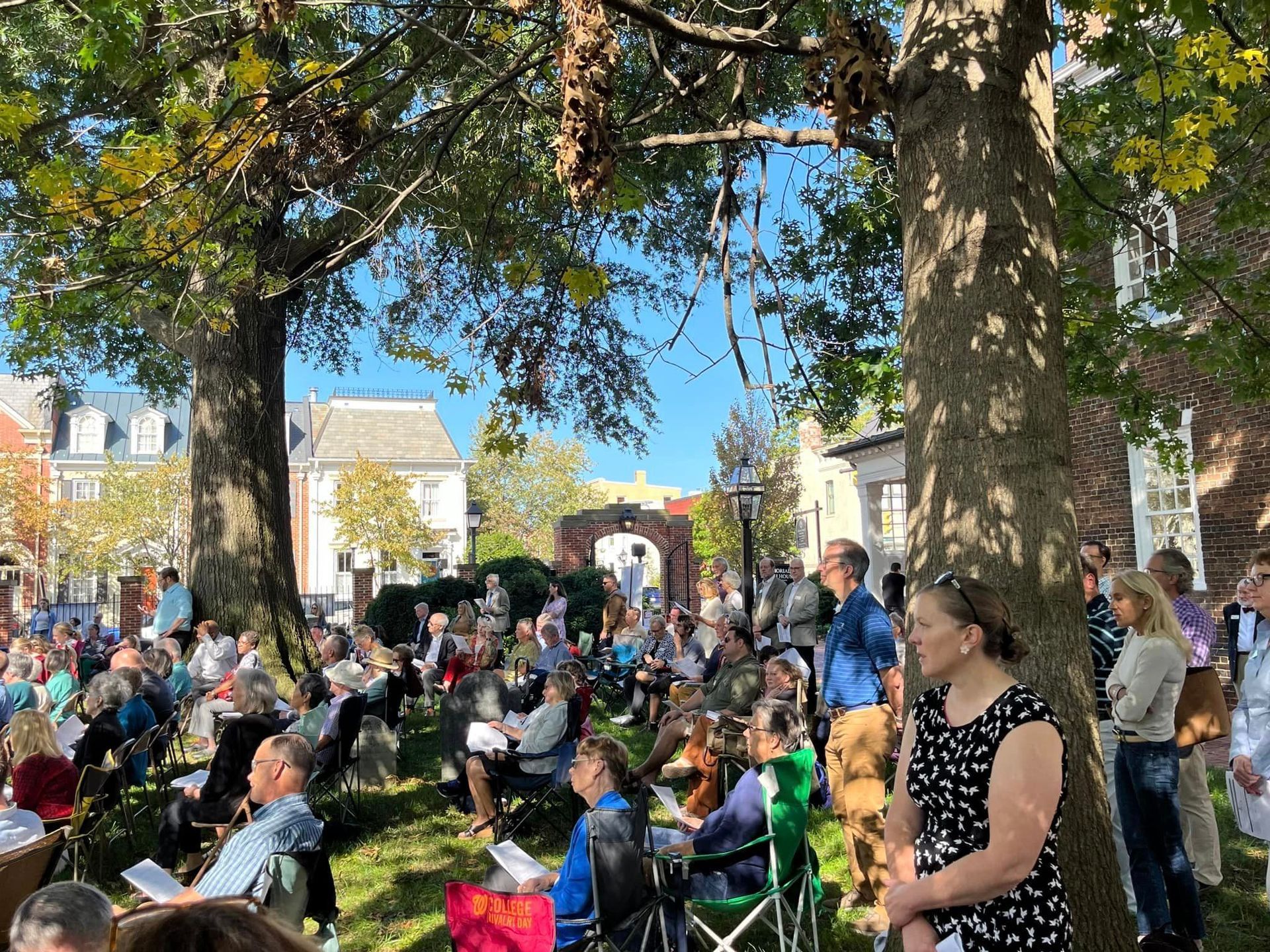
The Churchyard
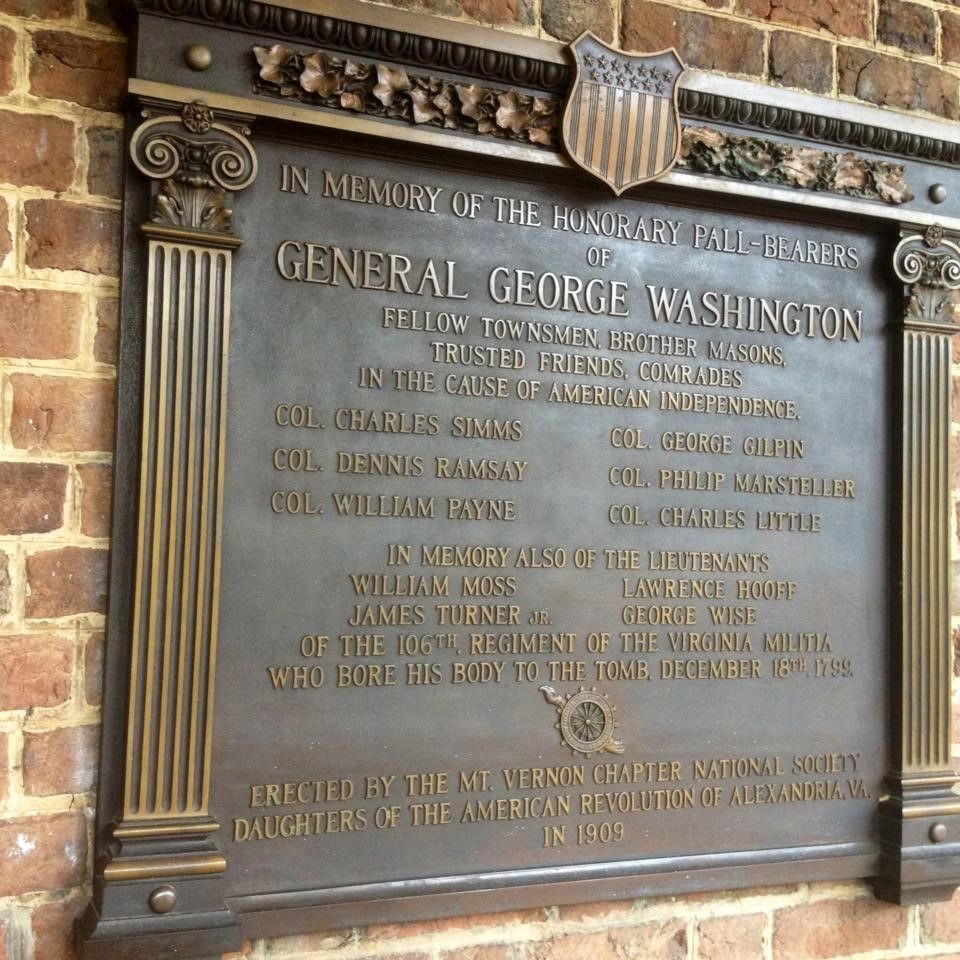
George Washington Pallbearer plaque:
This plaque honoring George Washington’s pallbearers, hanging by the door to the church entrance, was presented to the church by the Mount Vernon Chapter of the Daughters of
the American Revolution (DAR) in 1909. Two of the pallbearers, Charles Simms and Philip Marstellar, are buried in the churchyard.
Colonel Phillip Marstellar headstone:
The green headstone by the west fence commemorates Colonel Phillip Marstellar (d. 1803), a lieutenant colonel in the Revolutionary War, a Mayor of
Alexandria in the 1790s, and the only one of Washington's honorary pallbearers who was not a Mason. He used to have a handsome table stone monument, but it was carried off during the Civil War and hasn't been seen since. Today’s bronze plaque has been laid near the original location
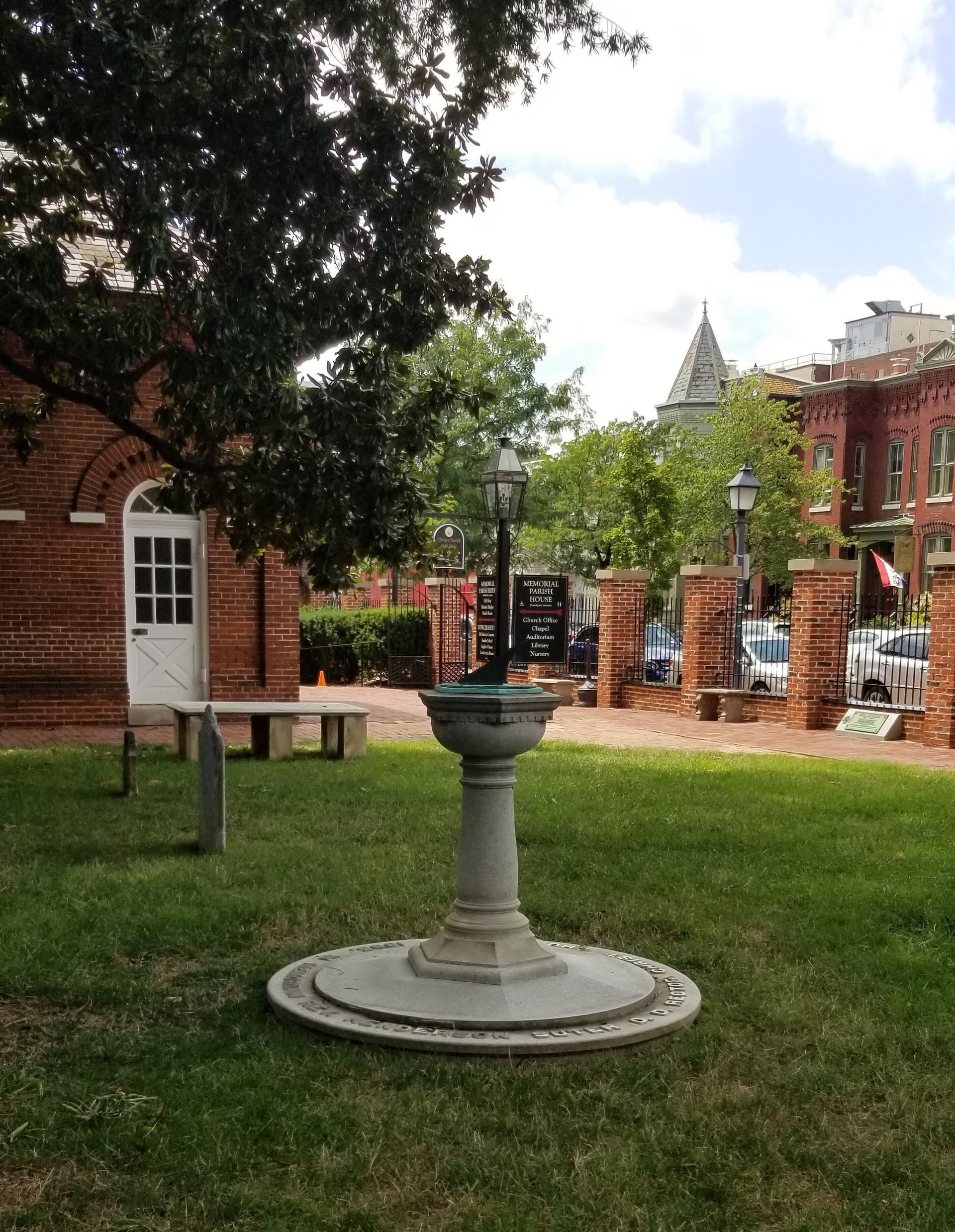
Suter Memorial Sundial:
If one looks at the base, one will see that it is a memorial to the Rev. Henderson Suter, Christ Church rector from 1878-1895. But it wasn’t always a sundial. After Rev. Suter’s death, a fountain was placed in the yard, since Rev. Suter had taken great interest in the Christ Church grounds and often had expressed the wish to have a fountain on the grounds.
But over the years, the fountain proved to be expensive to maintain, leaked, and on at least one occasion caused damage to the church foundation. The fountain was replaced by the sundial in 1925
First Parish House:
The brick parish house on the southwest corner of the property, which
contains the Meade meeting room, child care center, and Gift Shop was built in 1853-1854.
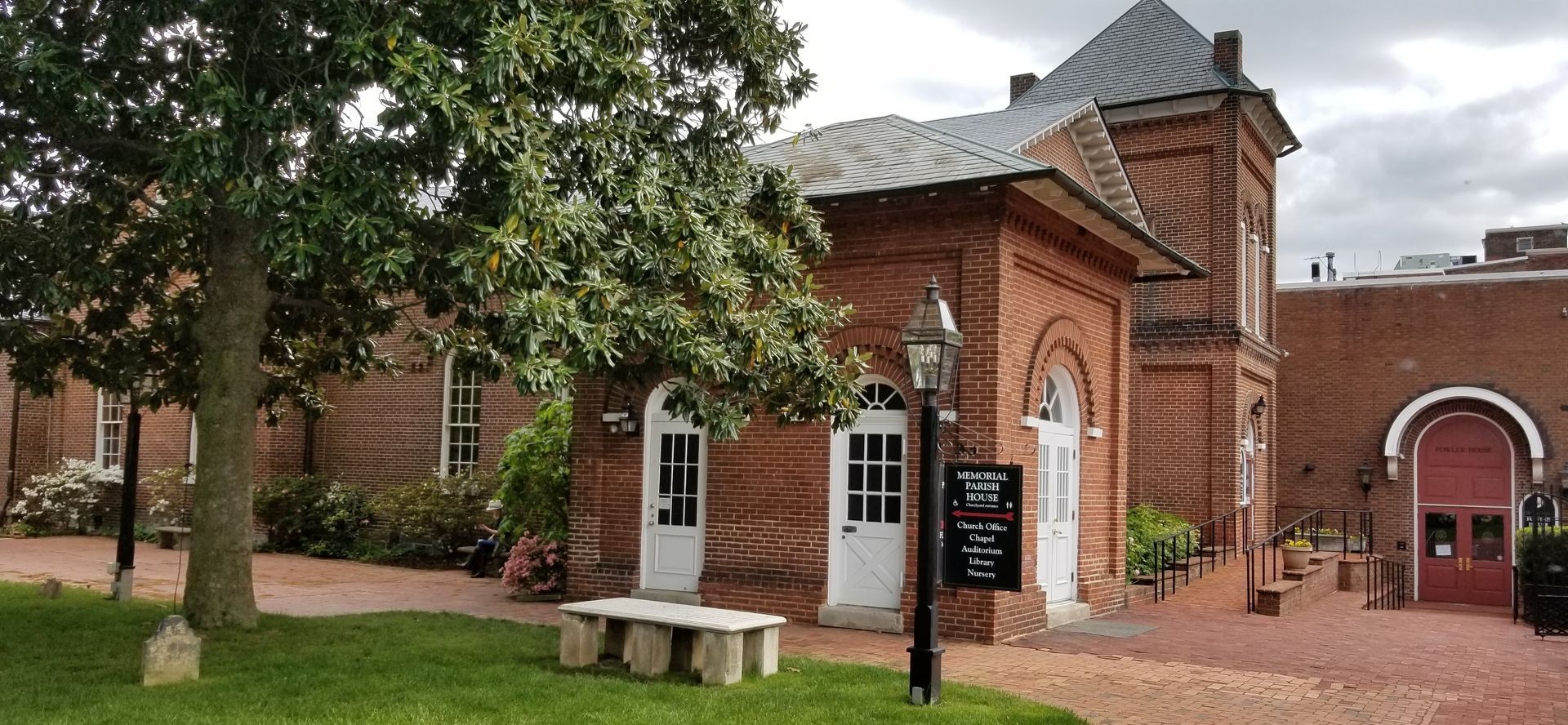

The Christ Church Gift Shop:
The mission of the Christ Church Gift Shop is to serve the local and international non-profit community by providing a wide variety of merchandise from religious to secular. It’s a great place to buy gifts for all occasions, and your purchase benefits such organizations as the Carpenter’s Shelter, Child & Family Network, Christ Church Bag Lunch Program, Christ Church Refugee Program, Community Lodgings, Domestic Violence Program, Lazarus Ministry, Meals on Wheels, and Our Little Roses.
Isaac Pierce headstone:
On the east side of the large elm tree is the oldest legible headstone still standing in Alexandria; that of Isaac Pierce (d.1771).
His tombstone describes him as "Born in Boston, son of Mr. Isaac Pierce, Distiller."
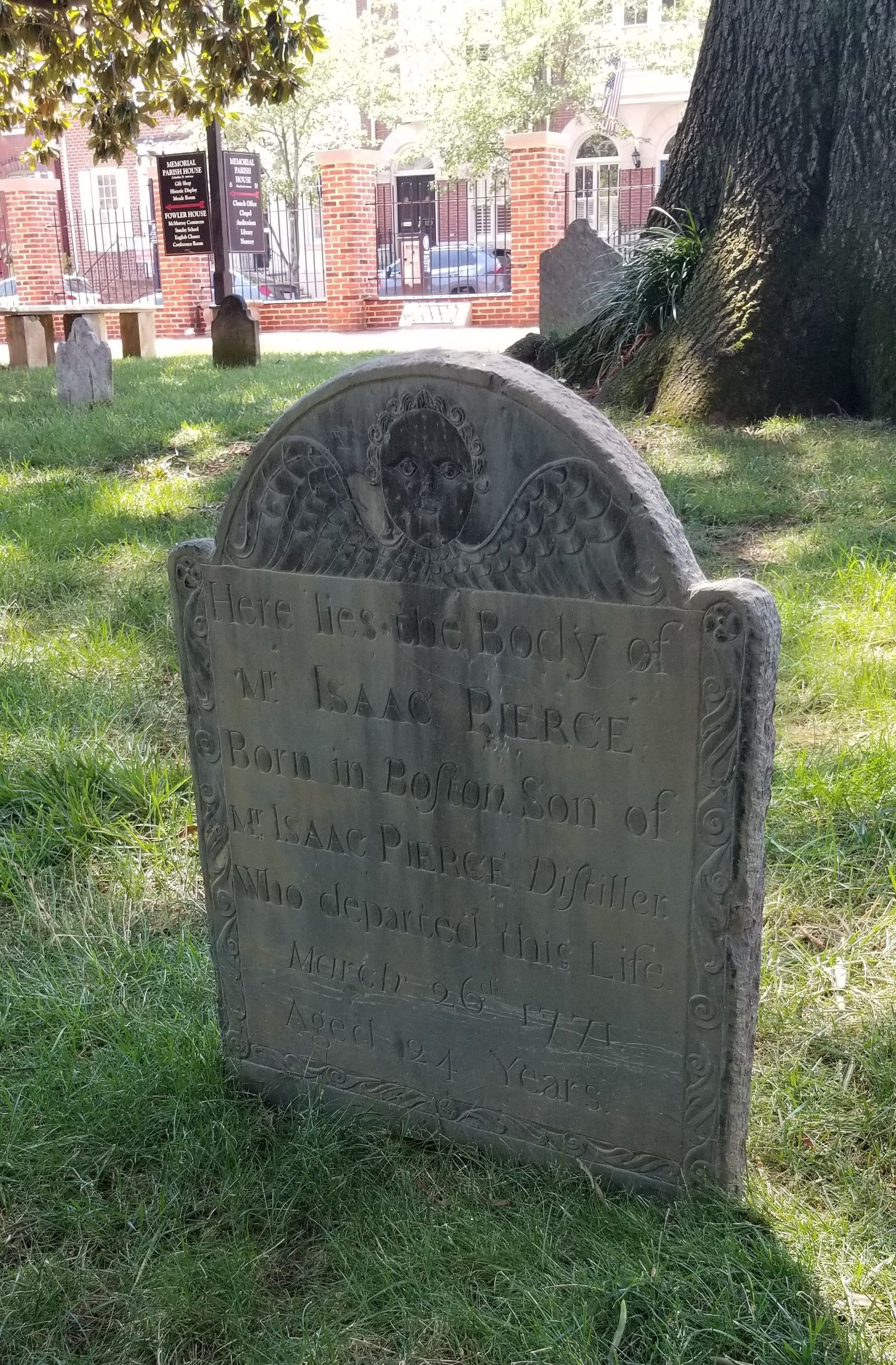
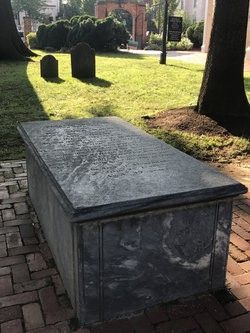
Ann Warren box tomb:
On the west side of the path between the church and parish houses lies the box tomb of
Ann Warren (d. 1808). an Englishwoman who was one of the earliest and most popular actresses on the American stage in her time. She first performed at Covent Garden in London and, after moving to America, performed to great acclaim in New York, Philadelphia and Washington D.C. She died at Gadsby’s Tavern at the age of 39, four days after having given birth to a still-born son. The stone reads in part, “By her loss the American stage has been deprived of one of its Brightest Ornaments."
Eleanor Wren headstone:
The large reddish-brown tombstone beside the path between the church and the parish house memorializes Eleanor Wren (d. 1798). According to the inscription, this stone was placed over her by the order of her disconsolate husband, who was left with two children (a 3-year-old son and 7-day-old daughter), to lament his loss. This is an example of the unfortunate defacing of some tombstones performed by vandals over the years, since there is an additional “1” before her age at death (32). There also is graffiti on the tombstone next to Eleanor’s.
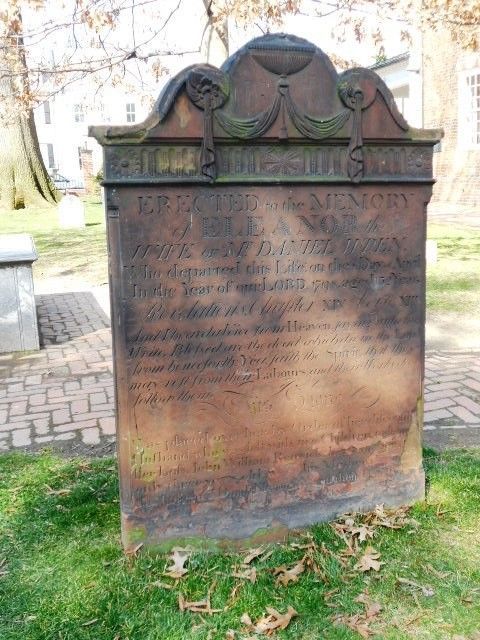
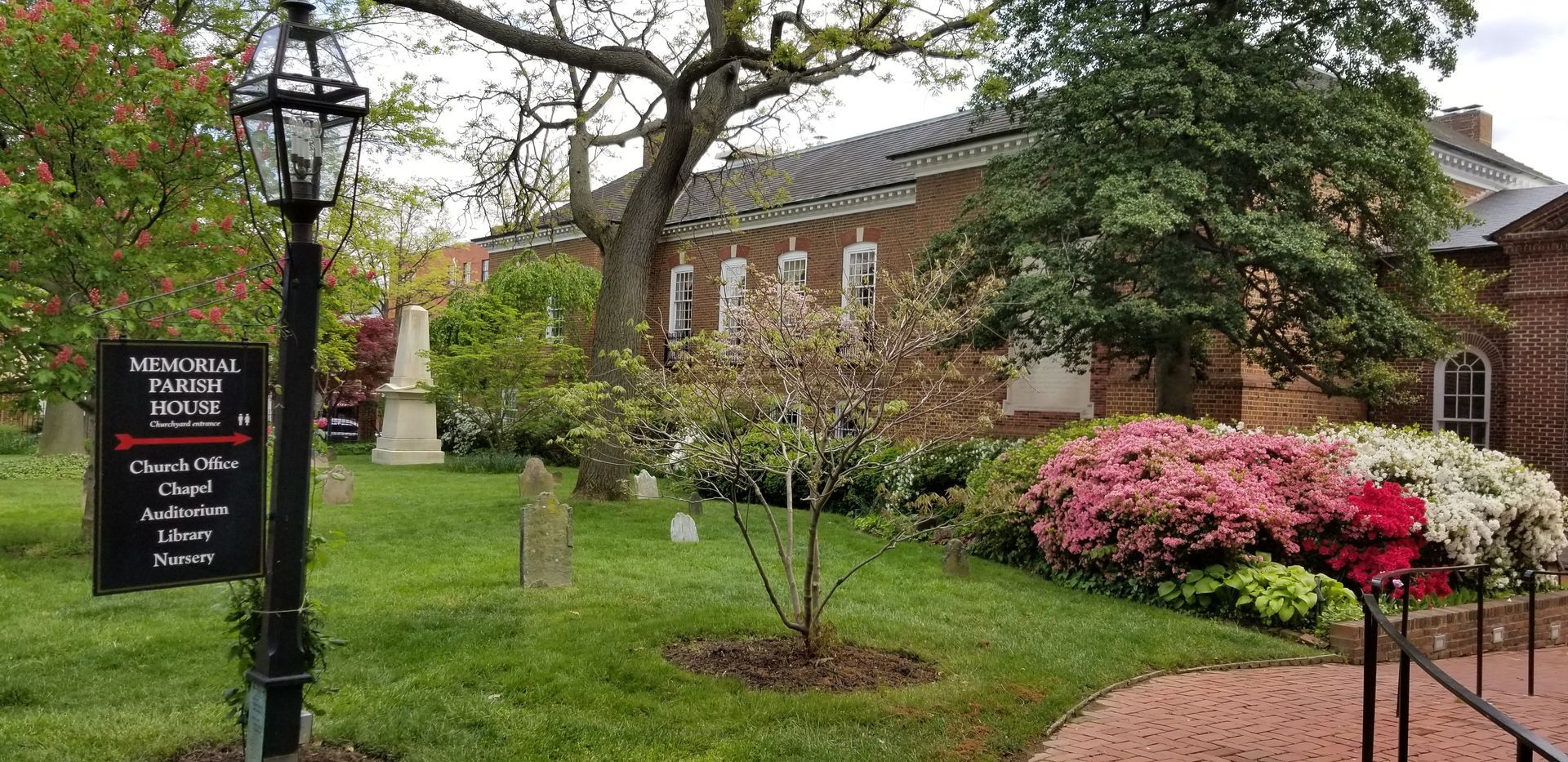
Memorial Parish Hall:
The second Parish House, Memorial Parish Hall on the southeast corner of the property facing Washington Street, was built in 1954-1955. This building houses the church administrative offices, library, and auditorium.
Memorial Parish Hall plaque:
The Christ Church congregation chose to name this building as the Christ Church Memorial Parish House as a memorial to all persons who had attended Christ Church. The plaque on the Parish House’s north wall commemorates that decision.
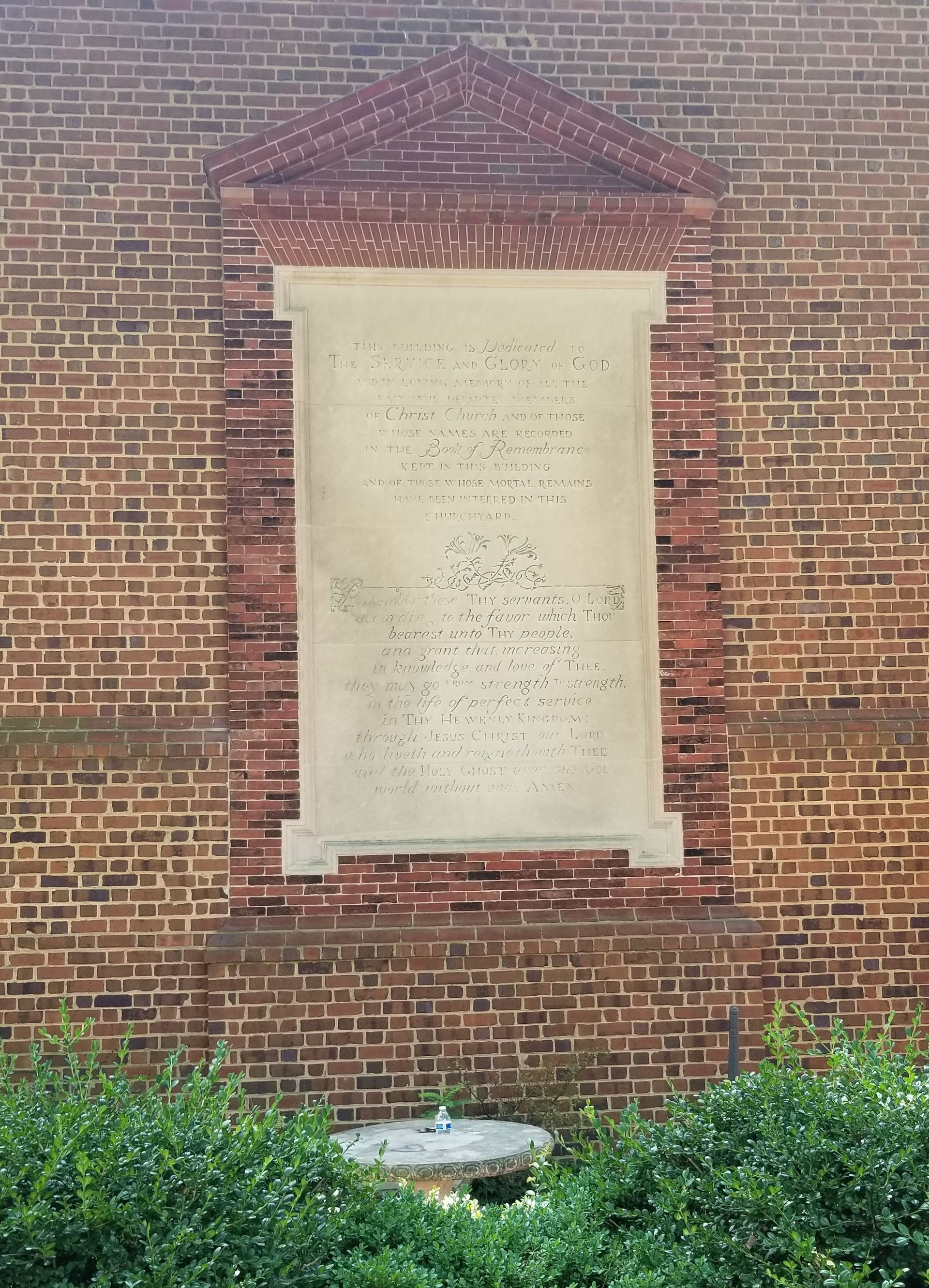
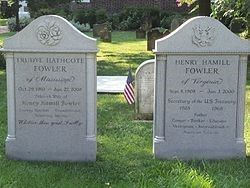
Henry Fowler and Trudye Fowler headstones:
On the north side of the path connecting Washington and Columbus streets lie the headstones of Henry Fowler (d. 2000) and his wife Trudye (d. 2008). Fowler was a Christ Church parishioner who served as President Lyndon Baines Johnson’s Treasury Secretary from 1965-1968.
Colonel Charles Simms headstone and marker:
The headstone and marble flat grave marker of Colonel Charles Simms (d. 1819) lies to the east of the Fowler headstones on the north side of the path connecting Washington and Columbus Streets. The burial of Colonel Simms (d. 1819) was an exception to the vestry’s 1809 banning of burials in the churchyard, after the City of Alexandria banned burials within city limits. Simms was a lieutenant colonel in the Revolutionary War, one of George Washington’s lawyers after the war, and a pallbearer at his funeral. He was Mayor of Alexandria in the early 1800s, and during his time in office surrendered the City to the British during the War of 1812.
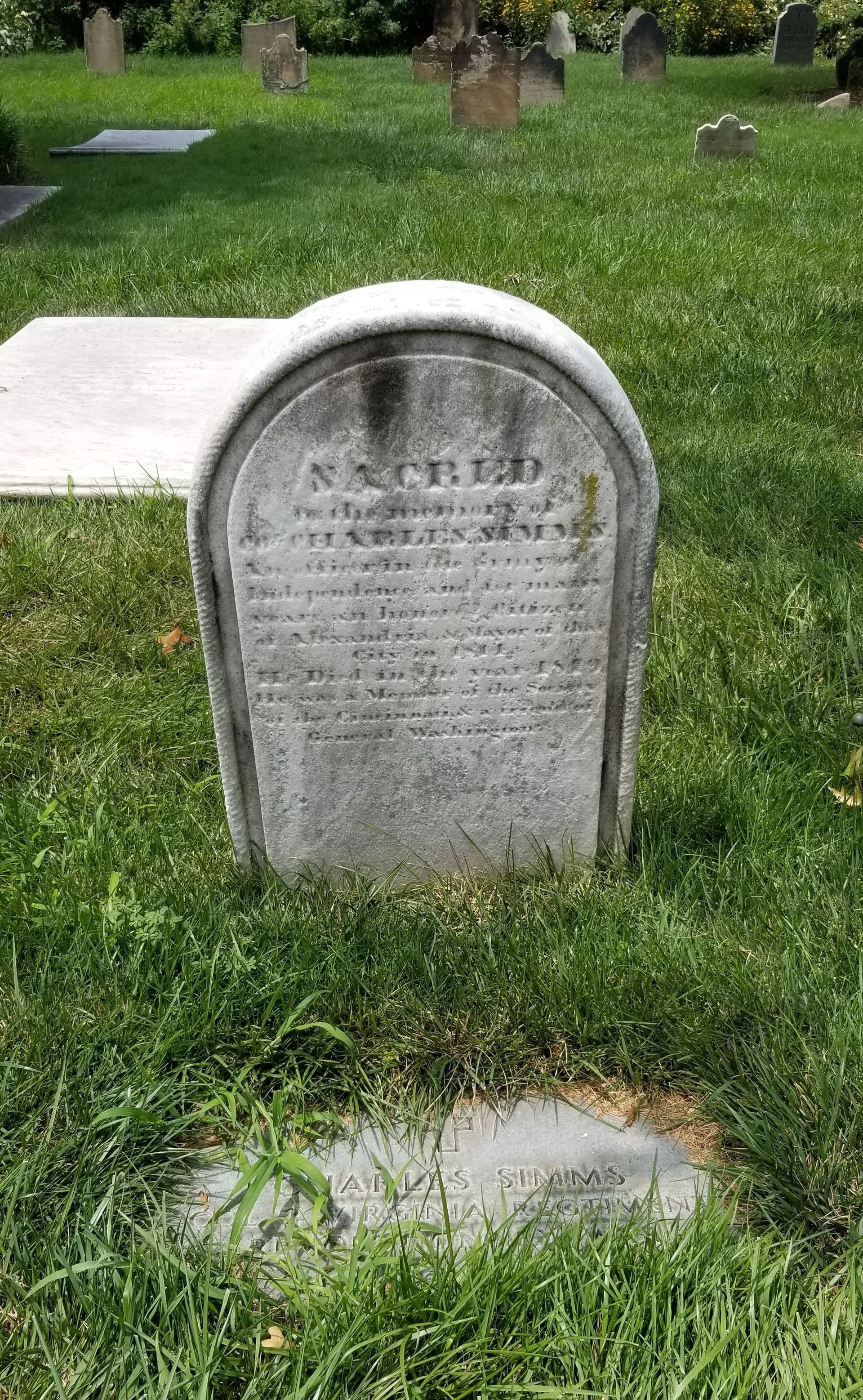
Bennett Obelisk:
The obelisk in the southeast corner of the churchyard memorializes philanthropist Charles Bennett (d. 1839). The City of Alexandria determined that Bennett (d. 1839) should be buried at Christ Church despite the 1809 ban on burials, probably because of his $140,000 donation to the City. Bennett had been involved in the rebuilding of the U.S. Capitol after its destruction by the British. The City commissioned Robert Mills, Architect of Public Buildings in Washington D.C. and later designer of the Washington Monument, to design the Bennett obelisk in 1841.
Confederate POWs memorial:
In 1878, remains of 34 Confederate POWs who died in Federal prisons were removed from the Alexandria National Cemetery and re-interred by the east fence in the Christ Church churchyard under the auspices of Southern Memorial Association.
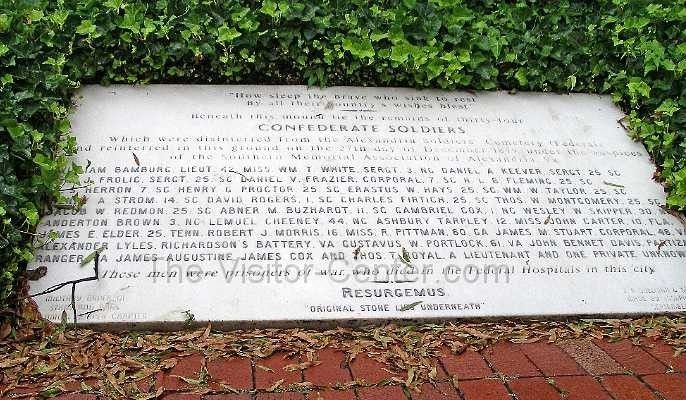
New Paragraph
